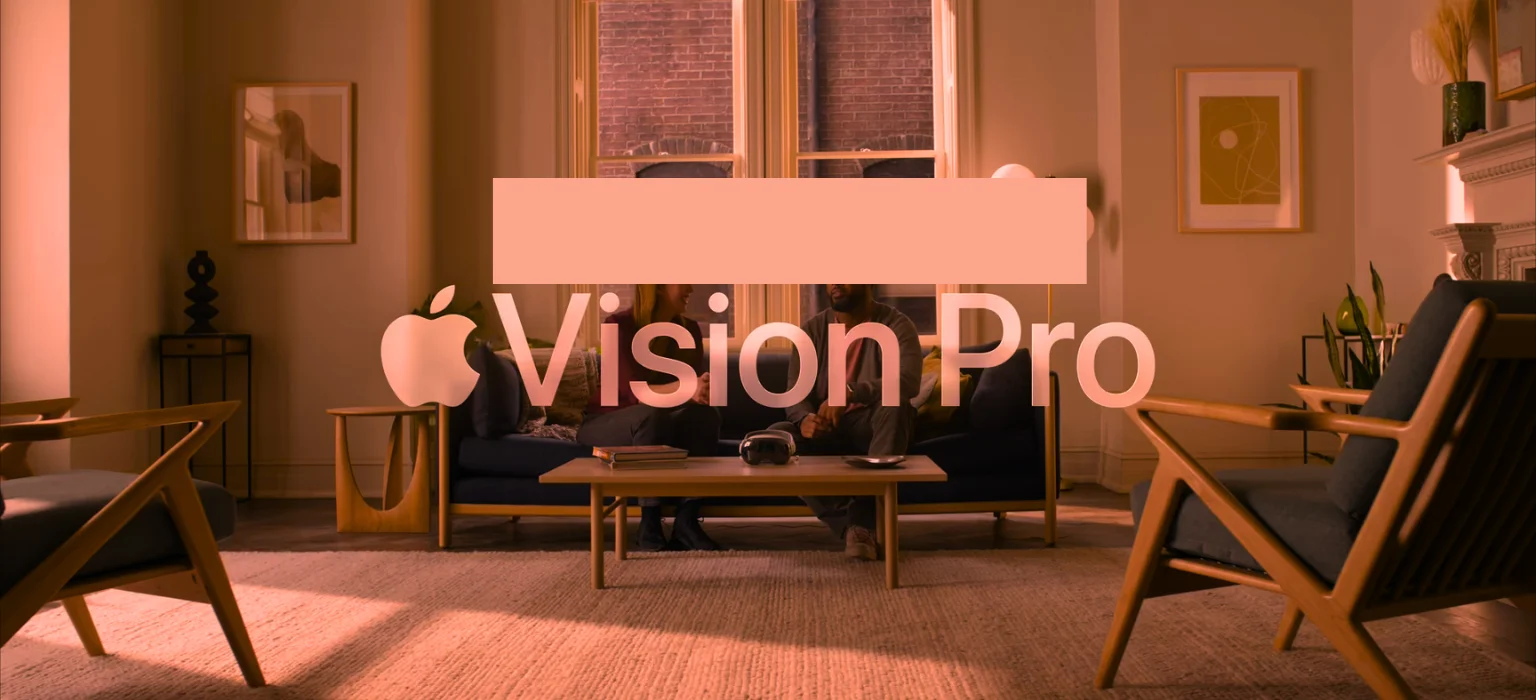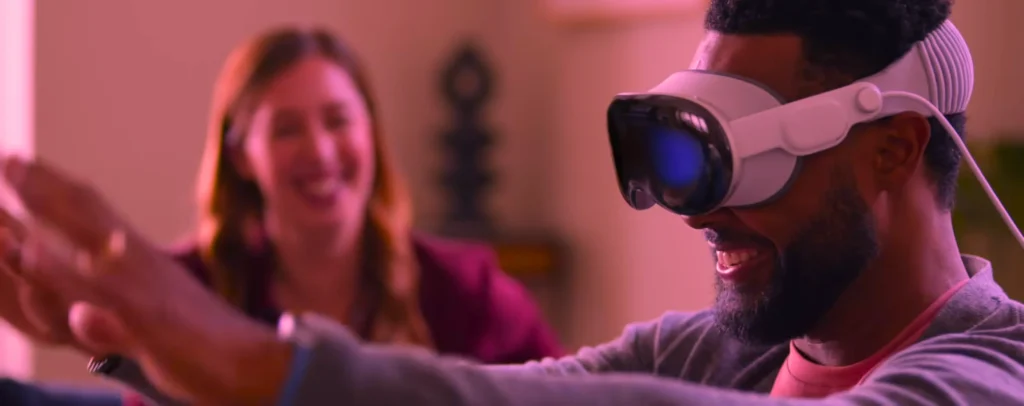
Apple’s freshly announced Augmented Reality headset, Vision Pro, carries an exceptionally steep $3,499 starting price. But hidden terms reveal high repair fees that can escalate costs even further if accidents occur. Before even considering a purchase, understanding the risky fine print is essential.
Getting covered by AppleCare+ can soften the financial blows of breakages or malfunctions. But forking out $500 upfront greatly inflates an already astronomical upfront investment in unproven first-generation technology.
For years, Apple built an empire on premium products bundled with premium service pricing. But the company may be testing boundaries on just how much its loyal customer base can realistically endure with the Vision Pro’s aggravating post-purchase terms.
It Can Cost Over $800 To Replace Cracked Vision Pro Glass

According to recently updated repair pricing on Apple’s website, replacing the Vision Pro headset’s cracked glass will set unlucky owners back a painful $799.
Most consumer technology like phones or laptops do require professional servicing for shattered displays. But when the product itself starts at $3,500 before tax, tacking on nearly $800 more for a single crack feels objectively extreme.
And in the pending class action lawsuit era emerging around social media addiction and mental health concerns, keeping VR usage reasonable is arguably prudent until long term impacts are better established. Handing kids such expensive equipment plays recklessly into fears emerging on the topic.
But even responsible adult use cannot safeguard against random daily misfortunes resulting in damage requiring repairs. Paying the equivalent of a top-tier iPhone repair for a single hairline crack on a $3,500 piece of experimental headgear will surely evoke consumer outrage.
And owners must also consider whether replacement Vision Pro components may ever face supply shortages. Apple’s repairs currently rely on ample inventory availability rather than quickly manufacturing specific parts for each broken unit. Shortages of any essential elements to fix units could accentuate frustrations exponentially while waiting indefinitely.
“Other Accidental Damage” To The Vision Pro Can Cost Over $2,000
Painfully, a shattered visor is only the start of potential mishaps that await Vision Pro explorers. Apple’s terms go further to warn that “other accidental damage” repairs can set unlucky victims back over $2,000.
Unlike the defined $799 cracked glass replacement, “other damage” encompasses an unlimited range of issues both big and small. Does a scratched lens qualify the same as a distorted depth sensor, broken strap or software glitch? Apple leaves it maddeningly open-ended.
In most scenarios, owners must simply bite the bullet on whatever fees Apple technicians determine once examining busted Vision Pros. Unless damage is successfully contested as an overlooked manufacturing defect, the costs fall squarely on owners post-purchase no matter the fault specifics.
And when delineated repair pricing already reveals a $799 charge just for cracked glass, owners can infer fixing intricate innards could scale costs drastically higher. Being slapped with a sudden $2,000+ repair invoice leaves practically no recourse beyond begrudgingly paying.
AppleCare+ Lowers Repairs, But Premiums Add Up
Apple does offer the AppleCare+ extended warranty to slightly assuage the risks of paying exorbitant Vision Pro repair bills down the road. But yet again, anticipated relief comes with eye-watering premiums baked in.
For the Vision Pro’s 24 months of coverage, AppleCare+ costs a one-time fee of $499 upfront. Or buyers can select a monthly charge of $24.99 over the 2 years totaling the same $499.
In return for doubling down upfront, AppleCare+ lowers repair fees to just $299 per service incident. So that $799 glass replacement now costs $300 instead if anything cracks or shatters. And any “other damage” also caps at $299 per repair event.
But when tacking on AppleCare+ to the $3,500 entry cost, buyers are looking at nearly $4,000 invested before even accounting for tax. So protection from financial catastrophes via warranties paradoxically requires even more money down.
Many consumers may determine the overall risk isn’t worth near $4,000 upfront on largely unproven technology. But for early adopters determined to dive in day one, AppleCare+ should be considered mandatory to hedge against exorbitant repairs.
Wait Times For Repairs Could Prove Problematic
Given the Vision Pro utilizes brand new components never before mass produced, buyers banking on AppleCare+ should temper expectations around wait times for fixes. Even with lower capped fees, delays getting inoperable headsets serviced may elicit frustrations.
If certain key elements like specialty sensors or the custom processors face unexpected shortages, Vision Pro repairs could be postponed for weeks or longer as supply chains scramble. There are simply too many unknowns in Apple’s untested production pipelines feeding high demand for a category-defining new device.
And with prior controversies around Apple throttling performance in aging iPhones, prolonged downtime on $4,000 AR headsets requiring frequent repairs could breed conspiracy theories and backlash. New groups urging right-to-repair legislation may use the Vision Pro’s third-party servicing restrictions as prime examples for reform efforts if problems emerge at scale.
While Apple deserves credit for risk-taking and inventiveness yielding devices like Vision Pro, reasonable consumer protections must match the pace of innovation to balance the scales. Signs already point to the company leaning too heavily on its loyal fanbase’s openness to endure bold pricing for category-leading technology.
Vision Pro Accessories Also Demand Premium Pricing
Adding insult to injury, Apple is also leveraging customers’ eagerness to snag the Vision Pro by charging well above manufacturing costs on various companion accessories.
The newly vital Vision Pro Travel Case, which protects the delicate $3,500 headset when not in use, will cost customers a staggering $199. Apple likely pays less than $10 per unit producing the cases at scale in China.
This enormous retail markup helps Apple capture opportunistic revenue from early adopters while built-in case functionality was intentionally excluded from the Vision Pro’s original engineering plans to inflate profits.
And don’t expect third parties to ride in with fairly priced alternatives anytime soon. Apple’s restrictive partnership contracts and patents will largely block cheaper versions of proprietary accessories hitting the market quickly.
So owners feeling the $3,500 entry point alone somehow wasn’t already enough must pony up hundreds more just to safely transport their Vision Pro when traveling or commuting.
Pre-Launch Hype Drives Strong Early Demand
Despite looming risk factors around first-version durability, lengthy repair delays or supply shortages, Apple still successfully unleashed highly anticipated pre-sales right on schedule. This demonstrates their well-honed marketing machine remains unmatched at driving early adoption.
The company clearly understands its dedicated supporters are much more willing to withstand being overcharged and underprotected on new, aspirational devices than the average consumer. Leveraging customer loyalty and FOMO to maximize revenue is a strategy Apple perfected over decades.
And initial market signals suggest the approach is already working despite contributing factors like a looming recession, chip shortages or inflation leaving consumers broadly more cautious entering 2023.
The Vision Pro’s preorder timeframe beginning February 2nd is already slipping into March for new buyers. This implies Apple is selling every unit its strained supply chain can produce in the near term. So while risks surely loom over the long-term trajectory, immense profit opportunities today make the gambles worthwhile.
Vision Pro wait times stretching a month out while pricing and protection remains firmly anti-consumer does point to Apple feeling emboldened by indefatigable loyalty among core fans. But tides can turn quickly if quality or reliability issues emerge once headsets land in consumers’ hands.
Final Words : Proceed With Extreme Caution
At the end of the day, pursuing first-generation, revolutionary hardware like the Apple Vision Pro headset requires accepting substantial risk versus reward calculations well beyond typical consumer electronics purchases.
Paying over 3X more than leading smartphones or laptops means anticipating significantly amplified pitfalls if production flaws or weaknesses in durability crop up post-purchase. And being locked out of reasonable DIY repairs serves to intensify reliance on Apple’s opaque and inconsistent support infrastructure.
While AppleCare+ coverage certainly helps hedge against financial catastrophes, it still demands heaping hundreds more onto an already towering upfront cost. And buyers may be understandably wary of further bloating the world’s most valuable company through accessory price gouging.
For these reasons, most average consumers are better served waiting for second or third generation Vision Pro models with kinks worked out before investing. But early adopters with ample discretionary income may accept the hazardous plunge in exchange for bragging rights flaunting bleeding edge AR functionality. Just brace cautiously for the dangers ahead with eyes wide open.
When it comes to reassurance around customer protections however, Apple offers little to inspire confidence so far. Draconian repair pricing mixed with offenses like overpriced cases point more to opportunistic profiteering than valuing user experience. Regaining public trust may prove challenging if hardware issues emerge.
In closing, tread very carefully before
Read More :-
